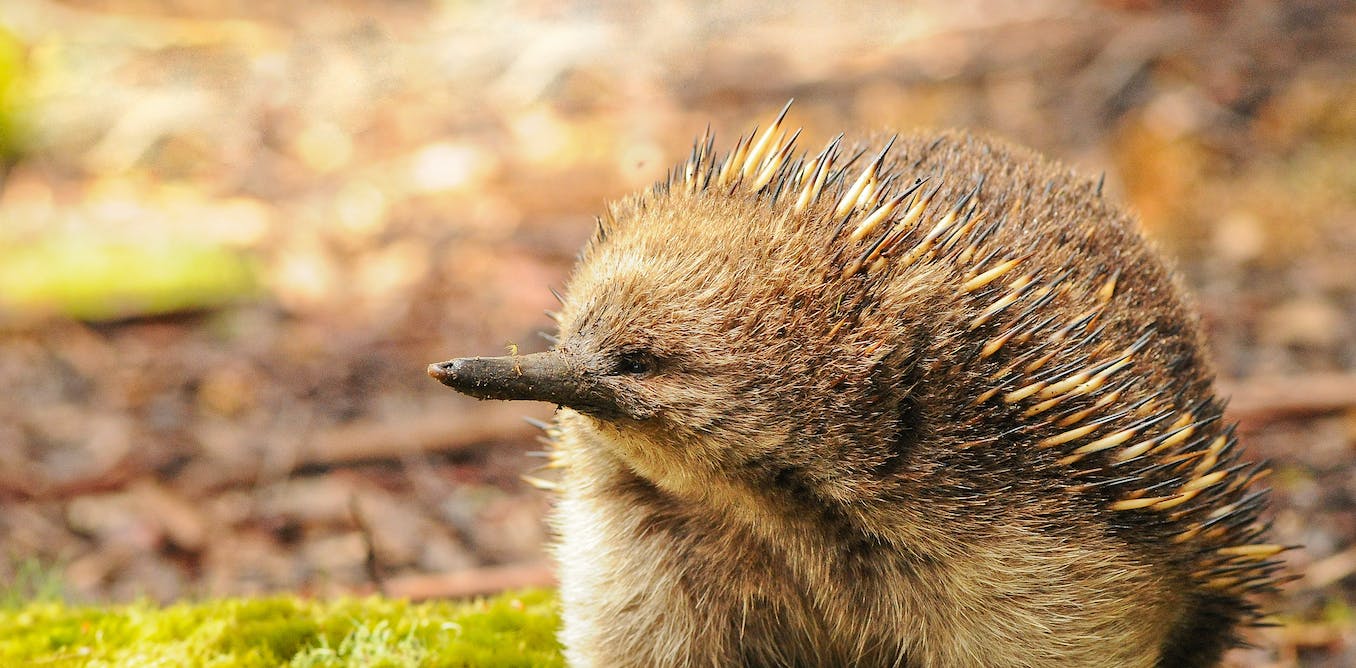Tasmanian echidnas are much hairier and Kangaroo Island echidnas join long mating trains.
Short-beaked echidnas are one of just five species of monotreme surviving in the world, alongside the platypus and three worm-eating long-beaked echidna species found on the island of New Guinea.
Our familiar short-beaked echidnas can weigh up to six kilograms - but the Western long-beaked echidna can get much larger at up to 16kg. These ancient mammals lay eggs through their cloacas and incubate them in a pouch-like skin fold, nurturing their tiny, jellybean-sized young after hatching.
On land? It’s likely echidnas use this ability to sense ants and termites moving through moist soil.
There are few other creatures able to tolerate climate ranges as broad. You can find echidnas on northern tropical savannah amid intense humidity, on coastal heaths and forests, in arid deserts and even on snowy mountains.
Pregnancy usually lasts about three weeks after mating for Kangaroo Island echidnas, followed by a long lactation period of 30 weeks for the baby puggle.
What about the echidna subspecies we’re most familiar with? T. aculeatus aculeatus has a similarly short lactation period, but rarely engages in mating train situations.



I can feel electricity, I can tolerate snow, and I’d be happy to participate in a mating train if anyone would invite me to one. Happy to chat more if anyone wants to write an article about me.
How hairy are you?
I believe the photos I just DM’d you should answer that question.
I’m in. We need ten more people for the train.
Ladies?
Only 1 according to Echidna lore.
Oh. I maybe didn’t think this all the way through. The dynamics of a train are dawning on me.
Do you also have a four-headed penis, where only 2 heads function at a time? If you do, I’m sure someone will write an article about you.
DM’d you relevant pictures to answer your question, too.